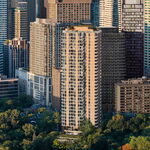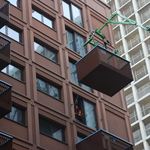[…]
High-frequency rail
Here’s one of those things the government seems to be deciding all the time, without ever deciding.
The Liberal government keeps making approving noises about high-frequency rail, but it still needs to make a go or no-go decision on the multibillion-dollar project to build new tracks for the Quebec City-Windsor corridor, at a cost of $4-billion to $6-billion.
That would be a strategic decision about the future of passenger rail, which comes second to freight service when it comes to deciding who gets to use railway tracks.
Via Rail has been backing the idea for years, but Justin Trudeau’s Liberals – and before them, Stephen Harper’s Conservatives – have been unwilling to set a direction for passenger rail. In 2016, when Mr. Trudeau’s Liberals had been in power for just months, then-auditor general Michael Ferguson complained in a report that the federal government had repeatedly ignored Via’s efforts to set a long-term strategic direction.
Since then, the Liberals have talked a lot about high-frequency rail. There has been planning and preprocurement spending. The government has repeatedly promised to launch a procurement process, but hasn’t yet. And what is still needed is the big yes-or-no commitment.




